DROPS Flora
Everyday comfort in alpaca and wool
from:
13RON
per 50 g
Content: 65% Wool, 35% Alpaca
Yarn Group:
A (23 - 26 stitches)
/ 4 ply / fingering
Weight/length: 50 g = approx 210 m
Recommended needle size: 3 mm
Knitting tension: 10 x 10 cm = 24 sts x 32 rows
Care: Hand Wash, max 30°C / Dry Flat
/ Feltable
Superwash: no
Made in: Peru
Raw material origin: Wool from South America
This yarn has an Oeko-Tex® certification (certificate number 23.HPE.36896), Standard 100, Class II from the Hohenstein Institute. This means that is has been tested for harmful substances and is considered safe in human-ecological terms. Class II means the yarn is suitable to come in direct contact with the skin to a large extent, such as blouses, shirts, mattresses, etc.
Made from 65% wool and 35% superfine alpaca, DROPS Flora is a thinner version of the popular DROPS Lima - the perfect everyday, comfort yarn.
Warm, comfortable and with good shape stability DROPS Flora gives lovely results with texture and cables and well as in multi-coloured designs (the colour pairings are fantastic), like Nordic patterns, blankets and more.
Read more about our products' sustainability here
Please be aware that the colours shown may vary from screen to screen in the same way that shades may vary slightly from dye lot to dye lot.
How do I care for this yarn?

Hand Wash, max 30°C / Dry Flat
First of all, consider just airing the garment, instead of washing it. If you still desire to wash it, here are some guidelines:
- Hand wash at 30ºC - separately - with wool detergent without enzymes or optical brighteners.
- Don’t let the garment soak. Move the garment gently back and forth, do not rub or squeeze it.
- Rinse the garment until the rinse water is completely clear, making sure the water temperature stays uniform.
- Do a light centrifugation of the garment (about 800rpm), choosing a program that DOES NOT take in water at the start. Or press carefully the water out of the garment with a dry towel. The garment shouldn’t be twisted or rolled.
- To dry the garment, shape it and lay it flat - do not hang - ideally on a warm bathroom floor or on top of a drying rack in a room with good air circulation. Never dry the garment in direct sunlight.
- Don’t tumble dry.
- Never iron the garment directly. Use always a damp cloth between your steaming iron or regular iron and the garment.
Note: If you are washing a project made with this yarn combined with another, the general guideline is to follow the washing instructions for the most delicate of the yarns you are working with.
Thinking about felting this yarn?
See how this yarn looks before and after felting:
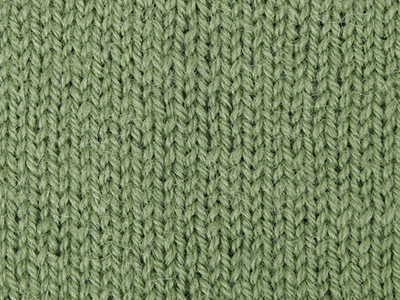
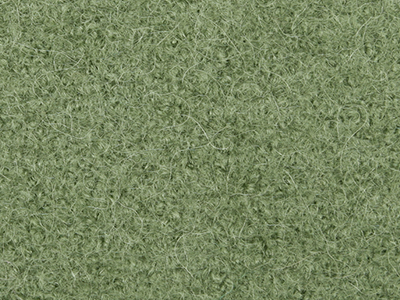
Needles: 3.00 mm
Before: 24 sts x 32 rows
After: 26 sts x 42 rows
Do you have a question about this yarn?
See a list of frequently asked questions (FAQ) about our yarns.
1) What type of fibers make the DROPS yarns?
Yarn can be made from a large number of natural and synthetic fibers. DROPS carries mainly yarns made from wool, cotton, alpaca, linen, mohair and silk. Each fiber type has its own qualities, and they are often mixed to take advantage of the best properties of each one. Coarse yarn has the advantage of being stronger and more durable, and finer fibers offer more softness and comfort. Here a bit about the main fibers we carry:
Alpaca:
Alpaca fleece is the natural fiber harvested from an alpaca, and it is similar in structure to sheep wool fiber. Its softness comes from the small diameter of the fiber, similar to merino wool. It is a soft, durable, luxurious and silky natural fiber. Yarn made from alpaca fibers does not felt or pill easily, and it can be light or heavy in weight, depending on how it is spun. While similar to sheep’s wool, it is warmer, not prickly, and has no lanolin, which makes it hypoallergenic. Alpacas come in 22 natural colors, with more than 300 shades from a true-blue black through browns-black, browns, white, silver and rose-greys.
Mohair:
This fiber comes from the Angora goats, and it's considered a luxury fiber. Mohair yarn is warm as wool, but much lighter in weight; it is durable, dyes well and does not felt easily. Mohair fibers have also a distinctive luster created by the way they reflect light. Despite being a hard fiber, mohair is usually spun into a very fluffy yarn, resulting in airy and lustrous garments.
Wool:
The wool fibers come from the skin of sheep and are relatively coarse fibers. Two striking characteristics of wool are its susceptibility to heat and its felting property, which is caused by the scales on the surface. Depending upon the breed of sheep, the appearance of the wool varies.
Wool from Merino sheep is considered the finest type of wool, having as characteristics that is finely crimped and soft. All the Merino wool in the DROPS yarns has its origins in South America, coming from sheep that have not been subject to Mulesing.
Pure new wool is wool made directly from animal fleece, and not recycled from existing wool garments.
Machine washable wool is wool treated chemically to minimize the outer fuzzy layer of the fibers, and be therefore fitable for machine wash (see Superwash).
Silk:
The silk fiber is a fine continuous fiber produced from the cocoon of a moth caterpillar known as the silkworm. While silkworm is cultivated, the wild or tussah silk is obtained from uncultivated silkworm cocoons. Silk fiber is one of the strongest natural fibers and makes a wonderful knitting yarn. It blends really well with other fibers, especially wool. Silk also dyes beautifully with natural dyes.
Vegetable fibers:
There are several varieties of vegetable fibers, found in the cell walls of plants or vegetables. Of all the varieties, two are recognized as major knitted or textile fibers. They are cotton and linen.
Cotton is the fiber surrounding the seeds in a cotton pod, and it is almost pure cellulose. Cotton is usually white in color but there are green and brown varieties as well. The cotton fiber is most often spun into yarn or thread and used to make a soft, breathable textile that is good for summer clothing and accessories, making a weaker yarn than silk or linen but stronger than wool.
Mercerized cotton is cotton that has been through a mercerization treatment. This treatment gives cotton fabrics and threads a lustrous yarn that is more lustrous than conventional cotton. It is also stronger, takes dye a little more readily, makes the yarn more resistant to mildew and reduces lint. It also may not shrink or lose its shape as much as "regular" cotton.
Linen is a fiber derived from the stalk of the flax plant that is durable and stronger than any other fiber. The linen fiber is relatively soft, straight and lustrous and becomes more beautiful with age. Linen is more comfortable to wear in hot temperatures than cotton, due to the fact that it absorbs moisture better and dries more quickly.
Other materials used in our yarns include synthetic fibers such as acrylic, viscose, polyamide (nylon) and polyester. These fibers are used mostly to give strength to a yarn (like our sock yarn, DROPS Fabel) or a special kind of structure (like our blown yarn, DROPS Air).
The polyamide fibre, commonly known as nylon, is very strong, durable, lightweight, easy to care for (can be machine washed and dried), and elastic, which makes it perfect for blending with other fibres to produce hard-wearing yarns like sock yarn.
Compared to polyester, polyamide is softer and more flexible, but it also absorbs more water and dries slower.
3) What type of information can I find on the DROPS yarn labels?
All DROPS yarn labels include information about fiber content (wool, cotton, etc.), weight in grams and ounces, length in meters and yards, washing instructions and symbols (explained here), color number, dye lot number and yarn group information.
4) What are the DROPS yarn groups?
All DROPS yarns are classified into 6 different thickness groups (A to F). Yarns in a same group have similar knitting tension/gauge, and can therefore be interchanged in patterns; however the length may be different, so when substituting always calculate the amount of meters/yards needed for the pattern to know the amount of yarn you need to get.
5) Can I use a different yarn than the one mentioned in the pattern?
Yes, as long as the yarn can be worked in the same knitting tension/gauge. Always swatch to make sure you get the same number of stitches in width and rows in height as given in the pattern.
Remember that different yarns with different textures, will give the garment different looks. The yardage/length may also be different, so when substituting always calculate the number of yards needed, in order to know the amount of yarn you need.
Read more about how to calculate the amount of an alternative yarn - and how to replace 1 thread of a yarn with 2 or more of another, here.
6) What does it mean when a yarn is “Superwash”?
A superwash wool is a special wool product that has been treated or processed in a way that allows it to be machine washable. Many people are afraid to work with wool because it is so easy to shrink (though some shrink wool on purpose) and superwash wool can allow them to work with great fibers without worry. (Read more here).
7) What does “Oeko-Tex® certified” means?
The Oeko-Tex® Standard 100 was introduced at the beginning of the 1990s as a response to the needs of the general public for textiles which posed no risk to health. The Oeko-Tex® Standard 100 is a globally uniform testing and certification system for textile raw materials, intermediate and end products at all stages of production. The test for harmful substances comprise substances which are prohibited or regulated by law, chemicals which are known to be harmful to health, and parameters which are included as a precautionary measure to safeguard health.
For more info go to www.oeko-tex.com
10) How accurate are the colours on the shade cards online?
When obtaining images for the shade card, we do our best to achieve the highest level of color accuracy. Unfortunately, we cannot guarantee how images will appear on your computer screen. Every monitor displays color differently, some colors might look darker than they really are, and some colors might be more saturated on some screens. If you experience that many of the yarn colors looks different on your screen than the actual color of the skeins, you can adjust the setting on your monitor.
11) What is a micron? What does super fine / extra fine mean?
The fineness of yarn fibers is measured in microns (thousands of millimeters). Super fine alpaca wool is 26-28 microns. Fine merino wool is less than 21.5 microns and extra fine merino is under 19.5 microns. The less microns the softer and more delicate a quality can be, the more microns the more hard wear the quality will be.
The reason why the microns in a yarn’s fibers are important is that the yarn will eventually become something else, and how delicate or coarse a yarn is will determine in part what we use it for. That’s why we recommend the softest yarns (like DROPS Baby Merino) for baby clothing, or why we choose to use a more hard wear yarn like DROPS Snow, for a seating pad or slipper.
12) Why are the colours in my skeins of print yarn different?
The reason why two skeins of a same print yarn look different can be 1) that both skeins are part of different dye lots; 2) that the skeins have been dyed using a technique called "magic print" (the one used for example in DROPS Delight), which provides unique patterns and smooth colour transitions to each skein, meaning also that within one dye lot, lighter or darker varieties might appear. This is no fault or defect, but part of the yarn's character.
13) My store doesn’t have the colour I want, what can I do?
If your DROPS store doesn’t have the yarn colour you want, try contacting a DROPS Super Store (the ones with the golden badges) - they will make sure to get a hold of the colour even if they don’t have it in stock themselves. See a list of all DROPS stores here.
14) Where can I find a specific dye lot of a colour?
Always try contacting your DROPS store first. If they do not have the dye lot you want we recommend you to ask other knitters and crocheters in the DROPS Workshop in Facebook or Ravelry, which may have the dye lot in their stash and might be willing to part from it.
Yarn sheds because there's not enough twist to hold all of the fibers together. All yarns have excess fibers (from production) that might come off as lint or shedding, in varied degrees that depend on how the yarn is spun. Brushed yarns ("hairier" yarns) like DROPS Melody, have more of these loose fibers than other yarns, and therefore shed more. Shedding also depends on what is worn under or over the garment, and whether this pulls at the yarn fibers. It’s therefore not possible to guarantee that there will be no shedding.
Below are some tips on how to get the best result when working with hairier yarns:
- When the garment is finished (before you wash it) shake it vigorously so the looser hairs come off. NOTE: do NOT use a lint roller, brush or any method that pulls at the yarn.
- Place the garment in a plastic bag and put it in your freezer - the temperature will cause the fibers to become less attached to each other, and excess fibers will come off easier. Leave in the freezer for a few hours before taking it out and shaking it again.
- Wash the garment according to the instructions on the yarn label. Garments worked with hairier yarns usually need to be shaken once dry after washing, so that the hairs rise and any excess fibers can come off.
Pilling is a natural process that happens to even the most exclusive of fibers. It's a natural sign of wear and tear that is hard to avoid, and that is most visible in high friction areas of your garment like a sweater's arms and cuffs.
You can make your garment look as new by removing the pilling, using a fabric comb or a pill/lint remover.
How can I replace this yarn?
If you are looking to replace this yarn with another DROPS yarn, you can use another yarn within the same yarn group, or try our yarn converter!
Comments / Questions (164)
![]() Jody wrote:
Jody wrote:
Is it possible to order through this page fir postage to New Zealand?
27.02.2021 - 19:39DROPS Design answered:
Dear Jody, we don't sell the yarns, this webpage is for the patterns only. You can check the shops that ship worldwide in the following link: https://www.garnstudio.com/findastore.php?s=w&cid=19
28.02.2021 kl. 16:17
![]() BOSS wrote:
BOSS wrote:
Lorsqu'on tricote avec un fil en double, faut-il prévoir un métrage supérieur et de quel pourcentage par rapport à un modèle donné avec un fil simple ?
15.02.2021 - 11:51DROPS Design answered:
Bonjour Mme Boss, cette leçon explique comment calculer le métrage à partir d'un modèle tricoté avec 1 seul fil (C par exemple pour remplacer 2 fils A comme Flora). Vous pouvez aussi utiliser le convertisseur pour laisser le calcul se faire tout seul. Bon tricot!
15.02.2021 kl. 12:31
![]() Catherine Smith wrote:
Catherine Smith wrote:
Hi I bought some wool from you about eighteen months ago and it was excellent - very pleased. Do you not send to NZ now ? (as I could not find it on your drop down of countries)
09.02.2021 - 03:02DROPS Design answered:
Dear Mrs Smith, we do not have stores in NZ for now, but you will find the list of DROPS stores shipping worldwide here. Happy knitting!
09.02.2021 kl. 09:39
![]() Lia wrote:
Lia wrote:
Ich habe begonnen, einen Pullover aus dem Garn Flora Mix Dark Grey zu stricken. Das Garn hatte ich noch von einem früheren Projekt übrig. Nun, nachdem ich die fehlende Menge nachbestellt habe, muss ich feststellen, dass die Farbe sich erheblich (viel heller!) und die Garndicke ein wenig von dem bereits vorhandenen und verstrickten Garn unterscheiden. Wie kann es sein, dass ein Garn mit gleicher Bezeichnung und Farbkodierung sich nach eingier Zeit so massiv ändert?
27.01.2021 - 10:10DROPS Design answered:
Liebe Lia, die Farben können ja je nach Farbbad unterschiedlich sein - es tut uns leid, wenn Sie einen fehlerhaften Knäuel erhalten haben. Bitte nehmen Sie mit Ihrem DROPS Laden Kontakt auf, gerne wird man Ihnen dort weiterhelfen. Viel Spaß beim stricken!
28.01.2021 kl. 10:22
![]() Monika Niederkrome wrote:
Monika Niederkrome wrote:
Wenn ich ein Tuch/Decke aus dem Garn Flora in der Größe 150 x 150 cm stricken möchte, wieviel Knäuel müsste ich dann bestellen?
16.01.2021 - 14:31DROPS Design answered:
Liebe Frau Niederkrome, je nach Maschenprobe, Muster, usw wird die Garnmenge unterschiedlich sein - hier finden Sie alle unsere Decke, die mit einem Garn von der Garngruppe A (wie Flora) gestrickt wird. Viel spaß beim stricken!
18.01.2021 kl. 11:48
![]() Kärt wrote:
Kärt wrote:
Hi, I saw that some of your yarns have this Oeko-Tex certification. Does it apply for your Flora yarn as well or does this one come without it? Best regards, Kärt
15.01.2021 - 12:25DROPS Design answered:
Dear Mrs Kärt, only the yarns with the Oeko-Tex certificate do have it - DROPS Flora for ex. doesn't currently have this certificate. Happy knitting!
15.01.2021 kl. 16:11
![]() Francoise Dionne wrote:
Francoise Dionne wrote:
Le prix de votre laine drop design floral svp je suis du queble prix de vente et de livraison svp merciec
11.01.2021 - 20:31DROPS Design answered:
Bonjour Mme Dionne, vous trouverez la liste des magasins au Canada (contactez Nordic Yarn) ou envoyant au Canada ici. Bon tricot!
12.01.2021 kl. 09:48
![]() Alexia wrote:
Alexia wrote:
Quand est-ce que la couleur Uni23 - brume forestiere sera disponible dans les superstire?
11.01.2021 - 11:33DROPS Design answered:
Bonjour Alexia, seuls les magasins DROPS peuvent vous répondre, n'hésitez pas à les contacter, ils sauront vous dire quand ils pensent en recevoir. Bon tricot!
11.01.2021 kl. 11:42
![]() Gertrud Redenius wrote:
Gertrud Redenius wrote:
Hallo Kann ich Drops Flora durch Drops Nord ersetzten. Strickmuster fl- 020 Bleiben Sie gesund Dankeschön MfG Gertrud Redenius
02.01.2021 - 11:04DROPS Design answered:
Liebe Frau Redenius, ja gerne, denn die gehören beide zur Garngruppe A - benutzen Sie den Garnumrechner bei der Anleitung um die neue Garnmenge kalkulieren zu lassen. Viel Spaß beim stricken!
05.01.2021 kl. 13:42
![]() Marisa Olivieri wrote:
Marisa Olivieri wrote:
Al colore blu indaco di flora quale kid si può abbinare?
06.12.2020 - 14:50DROPS Design answered:
Buonasera Marisa, contatti il suo rivenditore DROPS che sicuramente le potrà far vedere delle foto di abbinamenti tra cui scegliere il vostro preferito. Buon lavoro!
06.12.2020 kl. 21:37
![]() Leena Immonen wrote:
Leena Immonen wrote:
Haluaisin tehdä kevyen pitsijakun jouluksi itselleni. MInulla on aika kiva ohje, Novita talvi 2012, malli nro 47, ja yritän löytää jotakin sitä vastaavaa lankaa. Osaisitteko auttaa? Luonnonvalkoinen on tarkoitus tehdä.
16.11.2020 - 17:40
![]() Camelia Solomon wrote:
Camelia Solomon wrote:
Salve,vorrei comprare questa lana,però non riesco a selezionare il colore,la quantità,sapere il prezzo delle spedizioni,in quanti giorni arriva???Grazie
14.11.2020 - 15:24DROPS Design answered:
Buongiorno Camelia, per questo tipo di informazioni deve contattare direttamente il rivenditore DROPS da cui vuole effettuare l'acquisto. Buon lavoro!
14.11.2020 kl. 15:44
![]() Cristina wrote:
Cristina wrote:
Buonasera, ho chiamato prima per il filato colore 12, non trovo però dove cliccare sul colore per sapere quando vi arriverà. Grazie Cristina
06.11.2020 - 18:16DROPS Design answered:
Buonasera Cristina, per questo tipo di informazioni deve contattare il singolo venditore. Buon lavoro!
07.11.2020 kl. 20:28
![]() Josefina wrote:
Josefina wrote:
Hej! Jag undrar om ni har insyn i djurhållningen av till exempel Alpackor. Allt jag kan hitta är Made In Peru. Vill gärna veta så mycket som möjligt om garnet jag använder.
04.11.2020 - 17:34DROPS Design answered:
Hei Josefina. Det innsynet vi har fra våre leverandører av alpakka og dyrehold, at det skal foregå innenfor dyreferdsregler. mvh DROPS design
16.11.2020 kl. 08:10
![]() Anna wrote:
Anna wrote:
Hej! Jag älskar Drops flora och två koftor i garnet som hållt form och kvalitet jättebra. Jag saknar dock många kulörer - ockragul, en mörkblå som inte drar åt lila, en vacker lite mörkare rosa, skogsgrön osv. Jag har väntat i flera år på fler färger av detta underbara garn - kommer det? Hälsningar Anna
31.10.2020 - 20:56DROPS Design answered:
Hej Anna. Det kommer två nya färger i detta garn nu i december så jag hoppas att det är färger du kommer att gilla! Mvh DROPS Design
10.11.2020 kl. 11:34
![]() Ilse Baetz wrote:
Ilse Baetz wrote:
In Spanien sind die Nummern 10 und 19 von Drops Flora nicht mehr erhältlich wie kann ich sie aus Deutschland bekommen?
22.10.2020 - 14:29DROPS Design answered:
Liebe Frau Baetz, hier finden Sie die Liste von den DROPS Läden, die nach Spanien senden - dort finden Sie deutsche Läden. Viel Spaß beim stricken!
22.10.2020 kl. 15:37
![]() Jannie Roug wrote:
Jannie Roug wrote:
Drops Flora er det velegnet til babyer?
04.10.2020 - 13:15DROPS Design answered:
Hei Jannie. Ja, du kan fint bruke DROPS Flora til baby. Du finner mange baby oppskrifter i garngruppen A som Flora tilhører. mvh DROPS design
05.10.2020 kl. 08:31
![]() Ilse Baetz wrote:
Ilse Baetz wrote:
Necesito del hilo Flora Nro 10 , 4 madejas como los solicito ya que este hilo en la tienda chicas de punto está agotado
01.10.2020 - 12:20DROPS Design answered:
Hola Ilse. Nosotros no tenemos información del stock, ni vendemos la lana. Aquí tienes el link de las tiendas que venden Flora en España: https://www.garnstudio.com/yarn.php?show=drops-flora&cid=23.
15.11.2020 kl. 19:47
![]() Ghislaine Asselin wrote:
Ghislaine Asselin wrote:
I desperatly need 1 to 2 balls of this yarn to finish my project FLORA Colour 01 dyelot 7E6928 are you able to help me find some? Dye lot is not so important
25.08.2020 - 22:21DROPS Design answered:
Dear Mrs Asselin, please contact your DROPS store or any store shipping to your country - you can also ask in our DROPS Workshop if any other knitter could help you. Happy knitting!
26.08.2020 kl. 08:46
![]() Vivien wrote:
Vivien wrote:
Jullie gebruiken flora voor sokken maar ik zie dat er helemaal geen polyamide inzit. Kan dat dan wel voor sokken worden gebruikt?
26.07.2020 - 22:21DROPS Design answered:
Dag Vivien,
Jazeker, dat kan wel. Flora bevat alpaca zodat het extra warm is. Maar je hebt wel gelijk dat polyamide de sokken sterker maakt. Voor een echt sokkengaren kun je dus het beste DROPS Fabel gebruiken.
05.08.2020 kl. 20:56
![]() Tokkie Van Den Heever wrote:
Tokkie Van Den Heever wrote:
Is Drops Flora available in South Africa
04.07.2020 - 21:51DROPS Design answered:
Dear Mrs Van Den Heever, our yarns are available all around the world - see list of DROPS stores shipping worldwide here. Happy knitting!
06.07.2020 kl. 09:44
![]() Alina wrote:
Alina wrote:
Does Drops Flora become softer after washing? I am knitting a shawl with it and it feels a bit "scratchy", it worries me that it will not be comfortable when next to the skin. I appreciate an answer to help me decide if I should continue with this yarn or switch to another one. Thank you in advance.
29.05.2020 - 16:07
![]() Marine Barnabe wrote:
Marine Barnabe wrote:
Hi there, I wanted to know whether you can guarantee than all your wool (including the Peruvian Highland wool in the Flora, Lima, and Nepal blends) is from sheep not subjected to mulesing? I know your Merino wool is from non-mulesing sources but I couldn't find anything about the Peruvian wool. Thanks so much! Kind regards, Marine
16.04.2020 - 15:32DROPS Design answered:
Dear Mrs Barnabe, We only work with the biggest and most serious producers in the industry. These are companies that have to follow EU regulations and guidelines regarding the sourcing of raw material, treatment of animals, dyeing techniques, certificates etc. in order to be able to commercialize their product in the European Union. Everything is monitored by the pertinent authorities, not by us. We hope this gives you some sort of answer.
20.04.2020 kl. 15:24






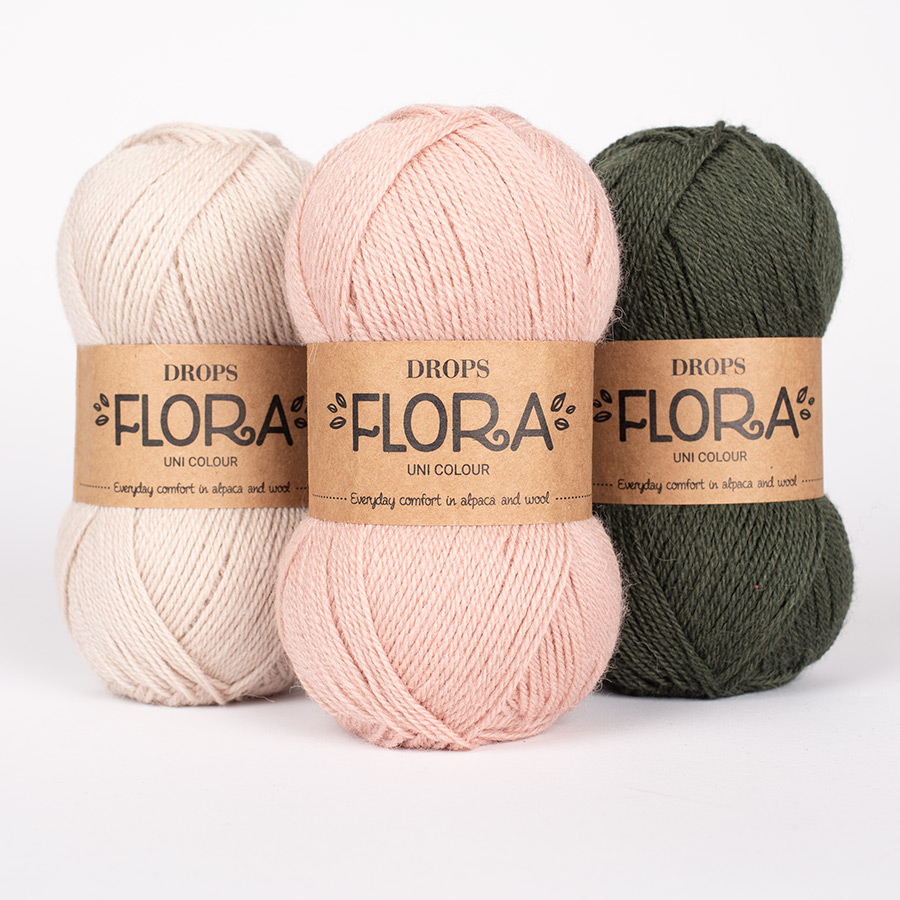
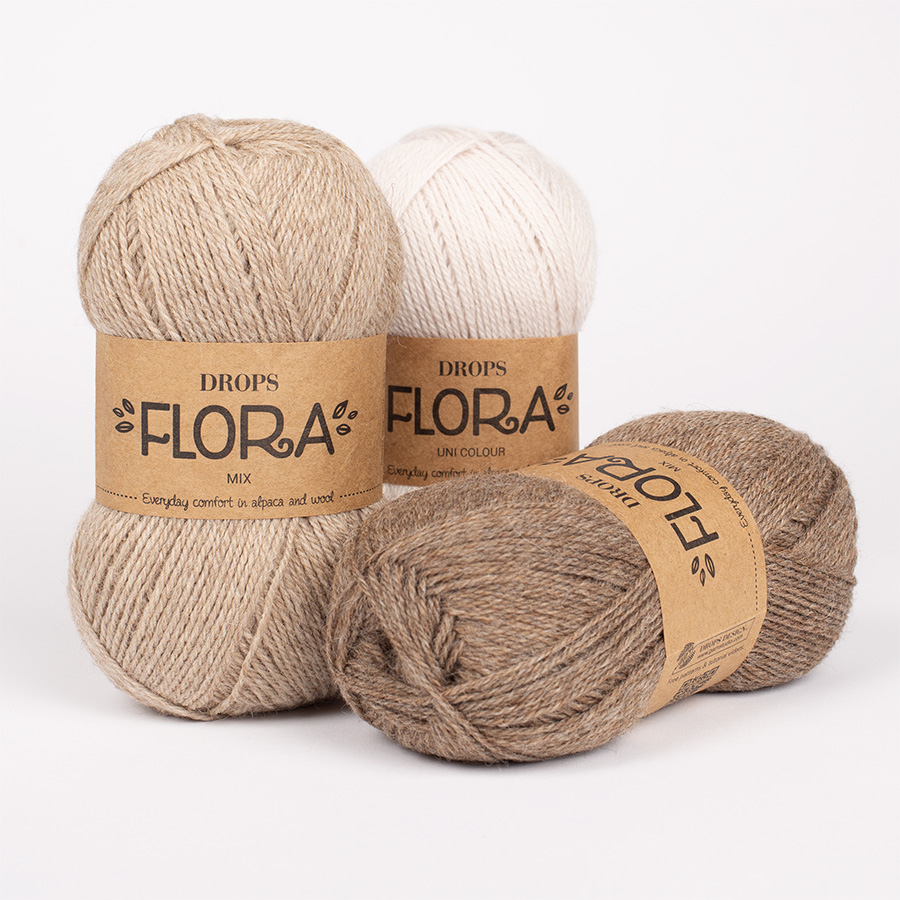
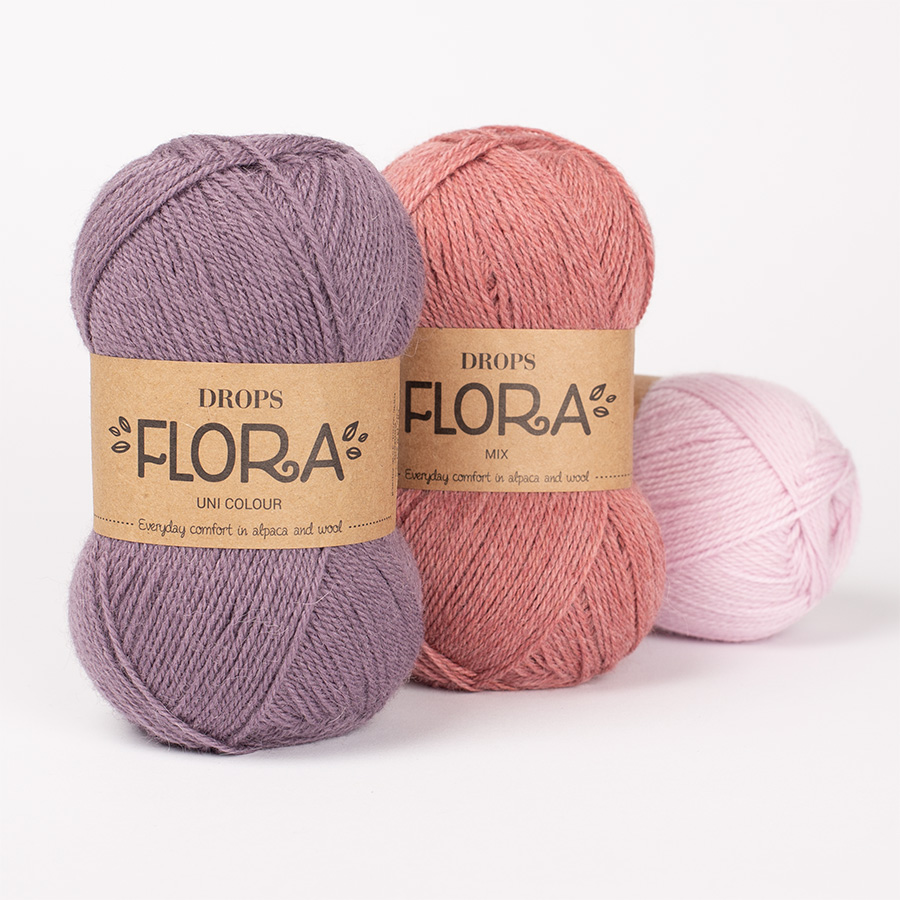

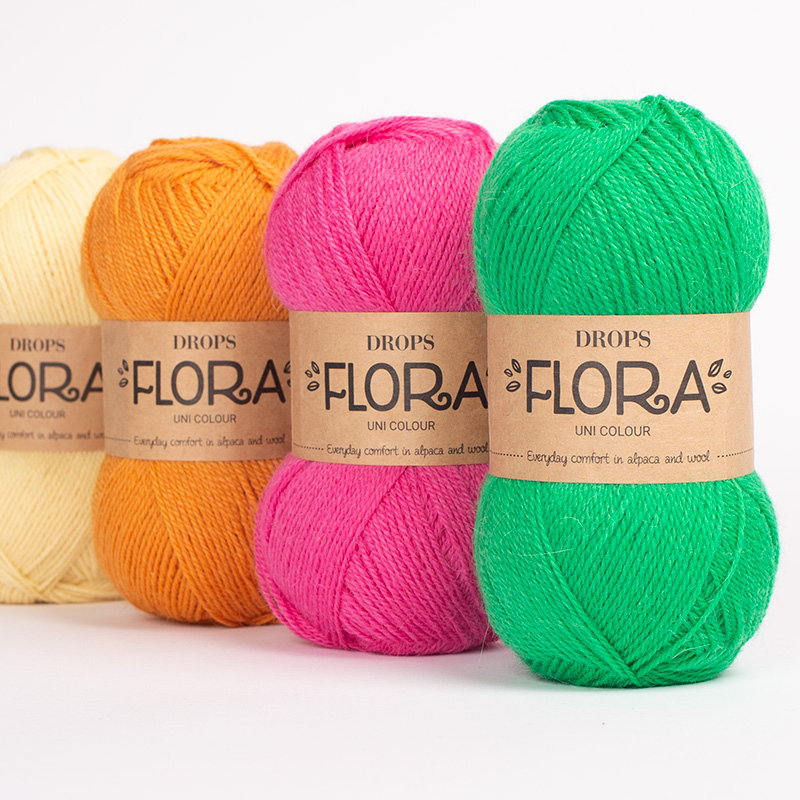


















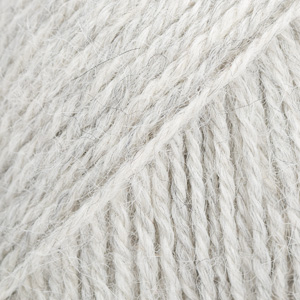










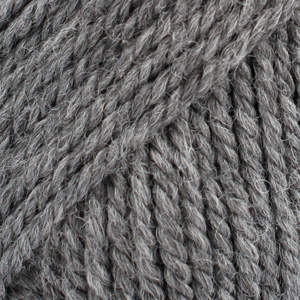















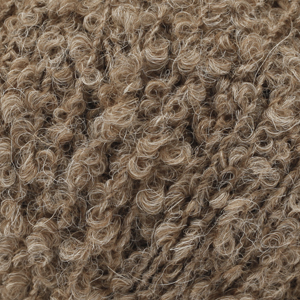












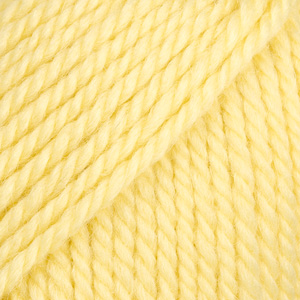




























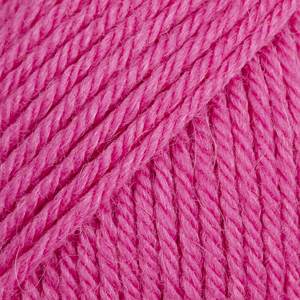






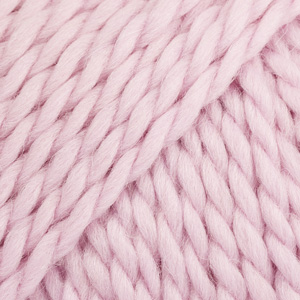









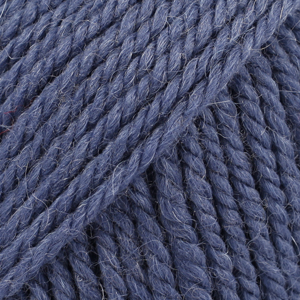






















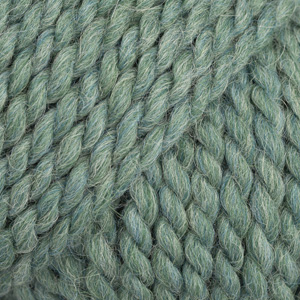


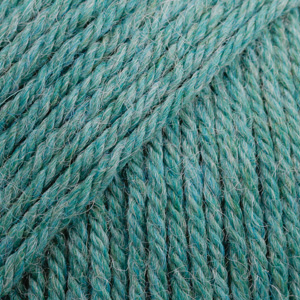







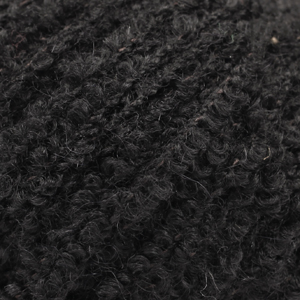

















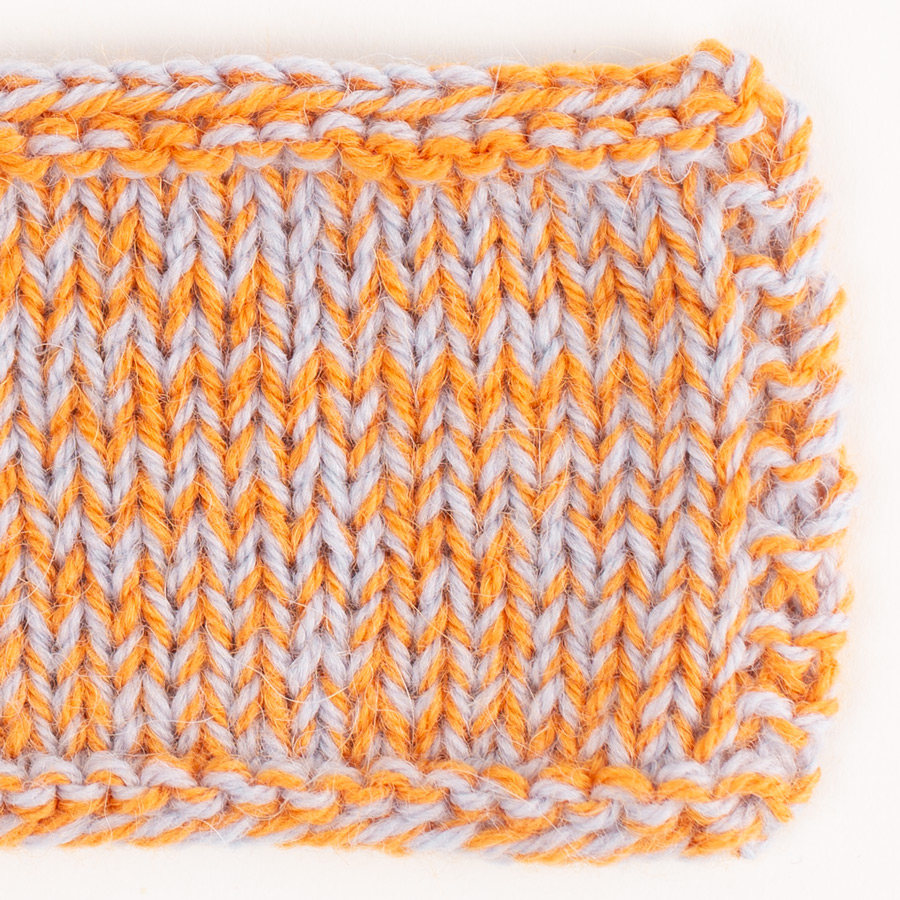
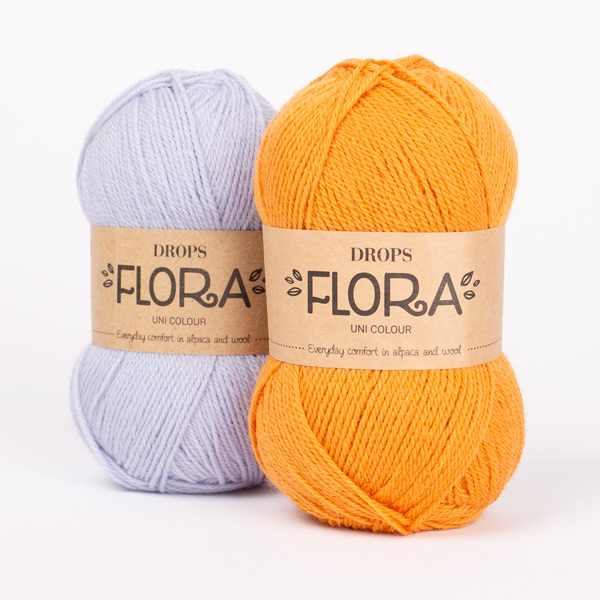
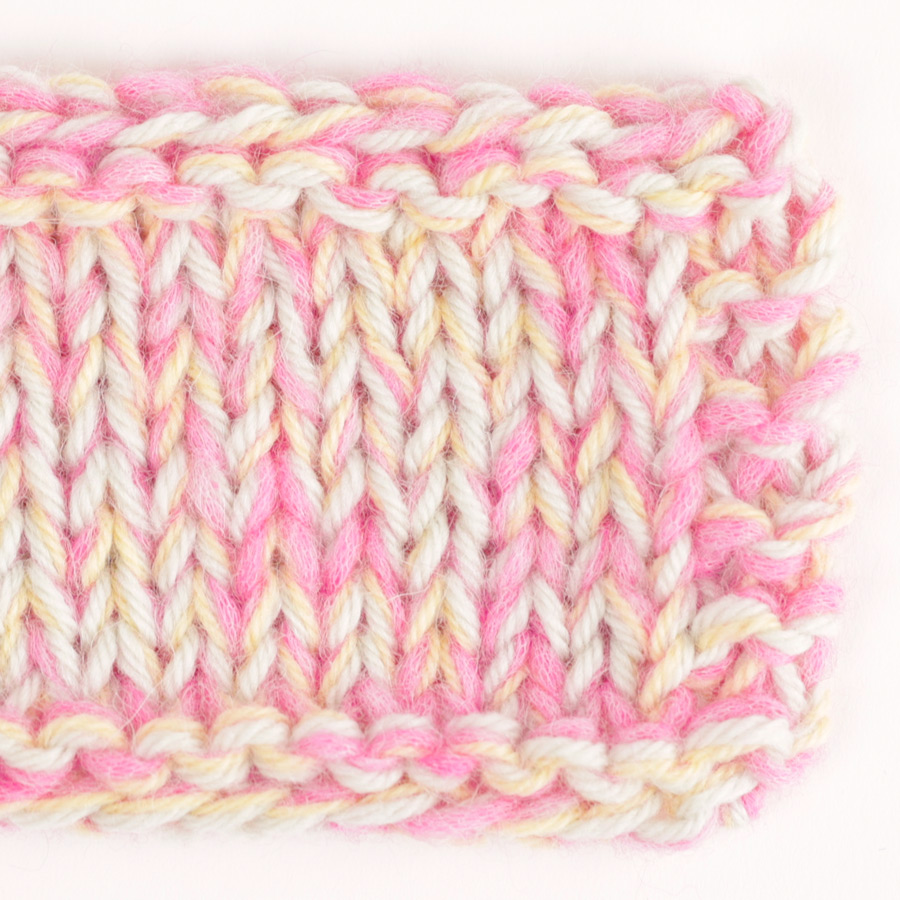
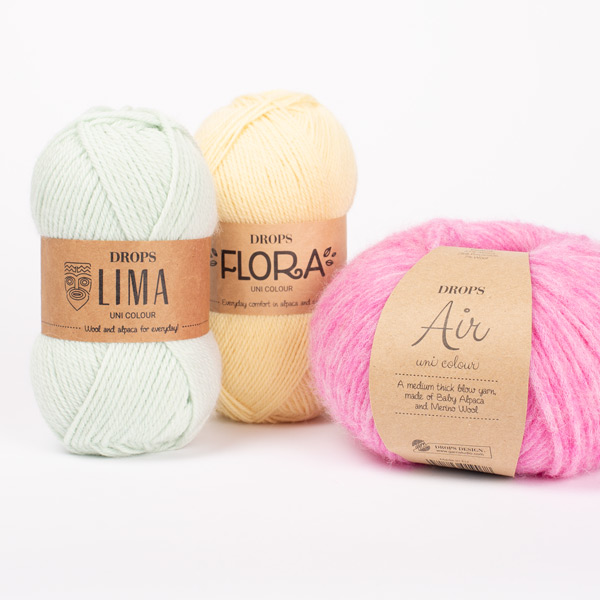
















Thank you very much! You're awsome! =D
28.01.2021 - 08:31